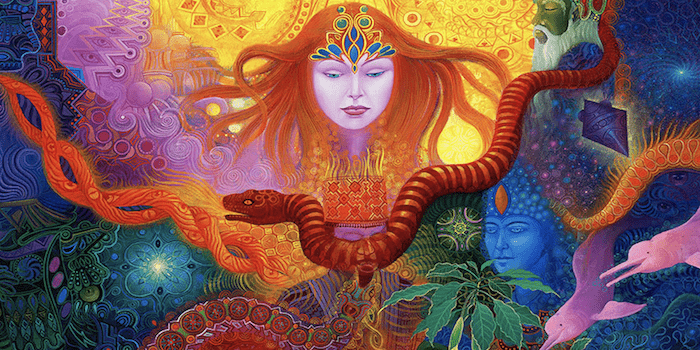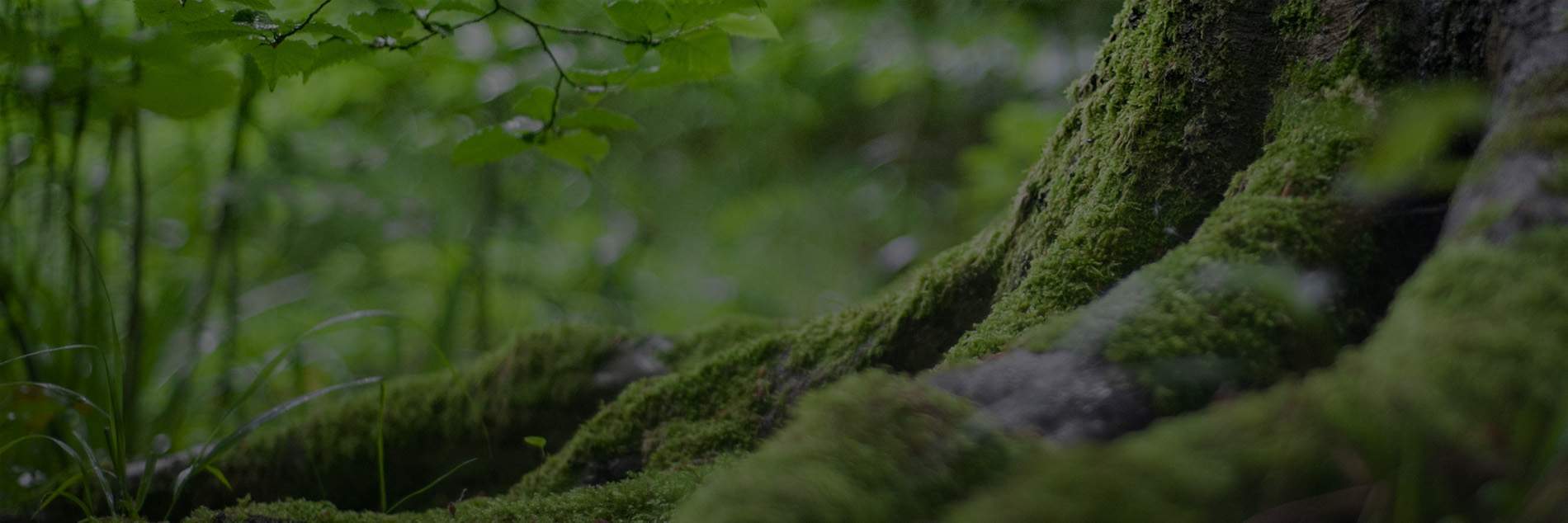Shamanism As a Path of Transformation

By Matt Toussaint
Traditionally, shamanic practices are rooted in small communities and tribal societies that lived a primarily pre-modern life. While all shamanic cultures are most likely not expressions of the idyllic state of oneness with nature that is commonly portrayed, it is at least safe to say that shamanic cultures were certainly much more in tune with and nature-based than typical modern society. Shamanistic elements also can be traced back to virtually every religious and spiritual tradition, including the more widely-practiced monotheistic traditions of today. This is not to say that every religion or spiritual tradition is shamanic, but that there are common elements and practices inherent to these traditions that have roots in these older ways of relating to and understanding the world.
As small, earth-oriented societies began to condense, diversify, and eventually move towards more stationary, technologically-focused and complex systems, shamanism went through a similar transformation. The traditional role of the community’s shaman was multifaceted: healer, sage, priest, ceremonialist; and sometimes political chief and war leader. These roles were not always held in concert by a single person or practitioner, but often the scope of the shaman’s duties was to fulfill several of these various functions. The movement away from small communities to larger societies began to unravel these once unified roles into separate, specialized positions. Today we see these same needs being satisfied through a number of more refined roles: doctors, therapists, religious or spiritual leaders, and so on.
Shamanism has never truly been replaced or lost, however. It is a nicely packaged misapprehension that shamanistic practices and traditions are relics of the past. As already mentioned, there are traces of shamanism in the most widely recognized religions of today. In many places around the world there are active, historically rooted traditions that continue to serve communities and individuals. Moreover, and especially over the last several decades, shamanism has also seen a rise in popularity among traditionally non-shamanic, Western people. There are many avenues and expressions of shamanism still operating beyond the thin veneer of materialism upheld by modern Western culture. Some of them do exist in the far reaches of the world, and some are right smack in the backyard of this urban madness.
It would be more accurate to say that Western culture has gone through a process of losing its shamanic roots. The evidence that people are scrambling to get them back is apparent. There is an undercurrent of dissatisfaction and spiritual longing that seems to come hand-in-hand with the growth of modern society. Essentially, this is a crisis of meaning that points towards a deepening loss of identity, authenticity, and genuine spiritual connection. This meaninglessness could be acknowledged as both symptom and sickness — a self-perpetuating, illusive and illusory spiritual emergency that leads its sufferers towards any number of possible outlets that promise answers and resolutions to the crisis.
One of these outlets is, or has become, shamanism. People come to shamanic practices looking for something that’s missing. They are looking to solve the riddle of their life, to have the emptiness inside finally filled with something that makes sense, with something that makes them feel like they are alive again. They want purpose. Meaning. Or they come just as people have for millennia: to heal any and all illnesses sourced in any and all dimensions — physical, psychological, emotional and spiritual.
People often look to shamanism as a way to help them live more fulfilled lives. But these needs and perceived deficiencies are not uniquely answered or sought after through shamanic means. Indeed, these questions are at the root of spiritual seeking itself. A devout Christian or Buddhist would undoubtedly find answers in their respective traditions. But for people who have no religious pedigree; or for those whose spiritual inheritance has proved to be arid, what choices do they have?
I know this path because I walked it. I still do. And the more people I see treading the shamanic current, the more I see how pervasive this longing for authenticity really is. How deeply people suffer for lack of meaning and purpose in life. How the fantasies of modernity have betrayed people. Sure, there are those that fit snugly into their seat, with seatback pockets nicely tucked, seatbelts on and tray tables secured. But there are many who just can’t sit still. They stir. They writhe. They want to know. Is this real? Is there something more? Does magic exist? Where is Spirit?
Shamanism is not the answer to everybody’s perils. It is not a panacea. But there is something that is peculiarly transformative about the shamanic path. This hearkens back to the role traditional shamans held. There were typically only one or a small number of practitioners that served a group or community. The training that was required of a young apprentice to grow into a fully functioning and capable shaman has been described in many ways, but it is usually said to be a path that brings you face to face with life and death. This is not just a metaphor; the student shaman went through the deepest trenches of darkness, death, hell, and sickness in order to ascend into realms of light, healing, medicine and knowledge. Usually this process took several years. Many times a student shaman would face a near-death experience at the beginning of or during their training. Unlike the way that some contemporary people idealize shamans and shamanism, this was not necessarily a sought after vocation traditionally. There are many anthropological accounts describing the tremendous resistance and fear that new apprentices would cling to when their time came. They knew what was coming: a level of change and transformation that was going to require them to put everything on the line, leaving no stone, thought, fear, or desire unturned. Despite the gravity of the responsibility and sacrifice required, if undertaken with courage and determination, the outcome was inevitable transformation.
This kind of traditional training was very intense and all-encompassing. It required your entirety, and it changed your entirety. And it didn’t and still doesn’t necessarily change an initiate “for the better”; towing the line and having your integrity and duality tested is built into the path. There is no guarantee sainthood. There is no ingrained pedestal. Full-on shamanic training was and remains to be a serious and perilous path. But it is a path that changes you.
In physical and social environments that are already embedded with an active shamanic tradition, it wasn’t necessary for everyone to go through the rigors of initiation and training. However, the services of the ones who did were not only available but an integral part of the social, spiritual, familial, mythological and personal lives of everyone who participated in society. The society itself was setup so that shamans were supported such that the mutual support from the shaman was offered to the society. All parties benefited.
Today, we don’t have this kind of social structure that enables an apprentice or seeker to endure a traditional learning experience. Modern, urban society doesn’t support it. The path isn’t naturally lain. It has to be forged, the trail blazed. To go the traditional route, you would have to find yourself in the jungles of South America, somewhere in Central Asia, or amongst a tribe in North America. For most, this sort of committed pilgrimage isn’t a very viable option either. For many, it feeds a deeply-rooted fantasy and longing that gets to the heart of what’s really gone amiss. Hence, although intimately nostalgic, this “old path” may not be an option at all, and is certainly not the way it’s imagined to be in storybooks. By definition, traditional training scenarios don’t actually exist in the modern scene. Which brings us back full circle to the original impulse that craves some kind of return to the ancient and magical.
But this may not be what’s needed. Perhaps ditching the modern world and life as you know it — although it can certainly seem like a brilliant idea at times — is not what’s being appealed to. This is not what’s really drawing seekers towards shamanism. Perhaps what draws people to the way of the shaman is the transformation that’s offered. The power to change. To really change, and grow, and transform; not just fantasize about it while telling yourself you are going to do it. But to really harness the innate capacity for change that life offers you. Life is already a transformative experience. Your body changes. Your mind changes. How you think and what you know about the world changes. Life experience transforms you. You don’t have to do anything special. You will change as you experience time. Shamanism can be looked at as a way to guide this process, to harmonize with the natural transformative flow of life.
So perhaps this calling is not to “become shamans” in the traditional sense, but to redefine what life means through shamanistic experience and practice. The way I like to see shamanism is not as a spiritual practice, but as a life practice. It is a way of being, a way of living life and exploring everything that life has to offer. Ultimately shamans are explorers and guides: of other realms, of consciousness, of the mind, body and spirit, and of the environment. And the environment around you is your life. You don’t need a different life to deepen the experience of and find meaning in the one you already have. Shamanistic skills, tools, ceremonies and other forms of practice can provide you with a platform from which to engage your life that can ultimately solve the riddle. Not because you are going to get the answer, and live in a “New Age of Love and Light” fantasy — but because there will be meaning in what you are doing. There will be clarity and consciousness in your thoughts and actions. There will be connection to your spirit and a world of spirit around you.
At the end of the big show, the quest for fulfillment is not found in the adoption of an identity attached to some external “thing”. Fulfillment can’t be consumed into being. It is not “shamanism” or “yoga” or “being spiritual” or “Burning Man” that fulfills you. Fulfillment is a mystical art, rooted within you that blossoms out into the world as you express what it is that you truly mean. Finding meaning is the true path, the calling for authenticity that hails you. This could manifest as anything. Being a gardener. An artist. A parent, friend, or teacher. It could be as healer. An athlete. A writer. Anything.
If it is a shamanistic calling — then by all means, there are multitudes of transformational tools excitedly dancing their dance, waiting for you. Not because of anything else other than just: that is what they do. Spirits, journeys, other worlds, means of healing and purging and releasing, access to knowledge, access to spiritual resources, explorations of consciousness… But if it is not a shamanistic calling, and you find yourself groping into these realms because there is something missing, something that you are looking for… Then your true path awaits you not in the crafting of an illusory mesa or practice, but in the quest for authenticity and meaning. The quest to honestly discover what it is that lives you, as you live life.
But remember… this comes at a price. The price for meaning and authenticity is your delusion and fantasy. It gets really real… really, really real when you jump that ship and wander into the depths of who and what you truly are.
Matt Toussaint has been studying and training in shamanism for the last 12 years. He offers a unique blend of traditional and modern practices, incorporating the best of what he knows as a way share and explore the shamanistic path of healing, empowerment and transformation. For more information about Matt and what he offers, please visit: http://www.shamanicevolution.org


